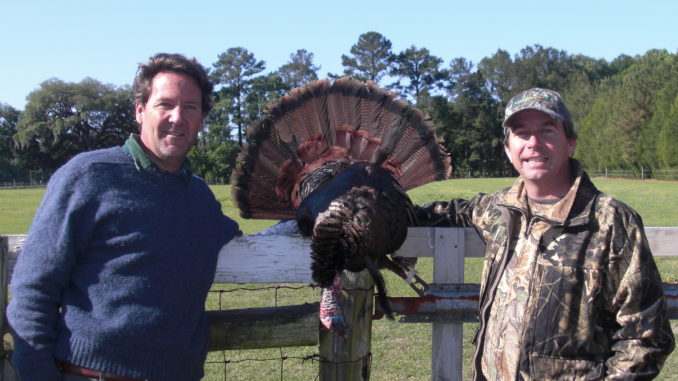
Harvest up four percent over 2009
Nearly 50,000 turkey hunters take to the woods annually in South Carolina with hopes of harvesting a wily gobbler, and the 2010 spring turkey season was no exception.
With an estimated harvest of 16,924 birds, the spring turkey harvest was up about 4 percent from 2009 and was the first increase in harvest since 2005.
Although the harvest was up in 2010, it was still 33 percent below the record harvest established in 2002, according to Charles Ruth, S.C Department of Natural Resources (DNR) Deer and Wild Turkey Project supervisor. This year’s increase in harvest is likely due to slightly better reproduction that occurred in 2008.
South Carolina’s spring wild turkey season opens April 1 and closes May 1 in most areas of the state and on all public lands with turkey hunting.
The season opens March 15 on private lands in 12 Lowcountry counties in the state. Annually, spring turkey hunters contribute more than $30 million in direct expenditures to South Carolina’s economy.
Each summer during July and August, DNR wildlife biologists, technicians, conservation officers, and private cooperators participate in an annual turkey observation survey.
Reproduction in wild turkeys has been poor seven of the last eight years and the spring harvest following each year of low recruitment has been down. Although still considered poor, reproduction in 2008 was up slightly resulting in a few more adult birds available for harvest in 2010. This point may explain the slight increase in harvest in 2010.
Furthermore, the association between subtle changes in reproduction and its effects on harvest are rather remarkable in South Carolina’s turkey harvest and reproductive data set.
Top counties for total turkey harvest were Berkeley, Williamsburg, Newberry, Fairfield, and Colleton. However, because counties vary in size, a better method of comparing harvests between counties is the harvest per unit area, for example turkeys harvested per square mile. Using this method top counties were Cherokee, Anderson, Union, Newberry, Bamberg, and Abbeville.
With the elimination of the check-in requirement for turkeys, hunters may wonder how turkey harvest figures are derived now.
“We are now using a Turkey Hunter Survey to estimate the harvest and the survey provides a more accurate estimate of the actual total harvest of birds in the state,” Ruth said. “Check stations worked well in the early years of turkey hunting, but they only provided a minimum count of harvested birds.
“The decision to eliminate the check-in requirement was made due to shortcomings of the system including deterioration of compliance with the check-in requirement, complaints from hunters regarding the inconvenience of check stations, and costs associated with the check station system.”
Prior to eliminating the check-in requirement, DNR conducted surveys in order to document the rate of noncompliance, as well as, to determine the relationship between harvest figures obtained from check stations and those obtained from surveys.
“As would be expected, harvest figures obtained from surveys are higher than those from check stations due to lack of compliance with the check-in requirement,” said Ruth.
Other statistics from this year’s survey indicate that there were approximately 43,415 turkey hunters with the average hunter spending about six days in the field.
Total effort expended by all hunters was approximately 208,010 days in 2010.
The success rate was about 30 percent in harvesting at least one gobbler and the week of the season during which the most turkeys were harvested was the first week in April.



Be the first to comment